…
|
|
||||
|
Yesterdays free advertisement for the Renewables Industry comes from Peter Martin, ANU, and was swallowed whole by The Conversation, and then repeated by The ABC. (If only the ABC had three million dollars a day to spend on checking things before it published them, they might have warned the economist that he doesn’t understand much about the grid or even the energy market.)
This kind of anti-coal PsyOps might work on teenagers:
Yallourn, in the Latrobe Valley, provides up to 20 per cent of Victoria’s power. It has been operating for 47 years. Since late 2017 at least one of its four units has broken down 50 times. Its workforce doubles for three to four months most years to deal with the breakdowns. It pumps out 3 per cent of Australia’s carbon emissions. And here’s Macarthur Wind Power plant, Victoria’s largest at 420-never-attained-MW. It breaks down nearly every single day:
Martin goes on in a non-stop infomercial for wind and solarHe must be aiming for 12 year old voters, or perhaps dogs and cats, with genius comments like this:
Nationwide, wind and solar including rooftop solar supplies 20% of our needs. It turns on and off at will.
Even 12 year olds know he can’t turn on the sun and wind. Though the AEMO appear to be happy about this level of national debate, as do The Conversation and the ABC editors. Perhaps it’s worth asking if they even read what they publish?
As for his understanding of maintenance: coal plants can be continuously refurbished. If one turbine at Yallorn isn’t being maintained properly perhaps that’s got something to do with the forced transition to random generators which strips profits from reliable power? Maybe ramping up and down this generational infrastructure “with the wind” costs more to maintain?
The bottom line:After closing two coal plants then spending four years installing renewables at world record levels, for one whole quarter, South Australian retailers have finally paid lower wholesale rates than QLD and NSW. Proving that if you take a jagged line and draw a line to a cherry picked point you can find any kind of trend you want.
Coal-fired plants close, then prices fall
Before Northern closed, South Australia had Australia’s highest price. Five years after the closure of Northern in 2016, and four years after the closure of Hazelwood in 2017, South Australia and Victorian have wholesale prices one-third lower than those in NSW and two-fifths lower than those in Queensland.
Something happened after the closure (largely as a result of the closure) that forced prices down. South Australia became a renewables powerhouse.
“Something happened”? Something indeed. Wholesale rates fell from a crisis peak, while retail prices and other costs rose (like storage, stability, and emergency control). What matters is the total cost and South Australians on average, pay 33 cents per kilowatt hour, nearly 60 percent more than people in Queensland. The closure of coal plants doesn’t cause a renewables boom, only Big Government junk subsidies can do that for junk generators.
And the closure of coal plants doesn’t cause prices to fall either. More coal means cheaper electricity.None of our grid now is as cheap as it was for years before renewables were added to the system
Peter Martin has cherry picked with a surgical scalpel. The last quarter, where South Australia was finally cheaper (on wholesale rates) than NSW and Qld, was the first time this has happened in eight years. For the last four years during the rapid rise of renewables, the cheapest electricity comes from the black coal state of Queensland.
 Fig 3: All those renewables, and yet prices are still not as low as what they were when we didn’t have them. South Australia might be a renewables superstar but guess where their cheapest reliable power comes from … black coalThe only thing cheaper than black coal is brown coal. Most of the hours of the day the price in South Australia is not being set by solar or wind power. SA system costs keep rising Another record! South Australia had to spend $15 million last quarter on “system security directions”. The AEMO were very busy ordering the Gas Powered generators (GPG) to stay on. In 2020, total costs for directing South Australian generators for system strength was $49 million (or
NSW prices spiked because 3,000 MW of coal power was out of action (mostly planned maintenance)The spike in NSW electricity prices that Martin builds his case on, was minor and temporary. According to the AEMO Quarterly report, the wholesale costs went up in NSW last quarter because it was the quietest quarter of the year, and plant managers decided to catch up on maintenance (see figure 6). Up to 3,000 MW of its black coal generators were offline. Thus, it follows, if they had more coal they would have been even cheaper than SA and Vic. Doesn’t fit the narrative…
It also follows that the AEMO knows Peter Martin is wrong. When will they speak up and serve the public that pay them?
Why is that left to unpaid bloggers?
 Figure 6. Look which state turned of it’s cheap black coal supplies last quarter for planned maintenance. More solar PV is the system vandal that makes coal power more expensiveCritics may argue that Solar PV on rooftops doesn’t bid, but “sets” the price by reducing demand. But renewables and coal are not swappable services. Being cheaper at noon can mean being more expensive at most other hours of the day. Random “free energy”, just steals profits from coal, makes a whole lot of infrastructure and staff sit around doing nothing on a long lunch, and run less efficiently when it tries to fill in for the energy vandal forced on the system. When the sun goes down the whole solar team and capital sit around powering nothing too. Coal plus solar can not possibly be cheaper than coal alone. It takes more people, more capital, more land, more maintenance. In the hours solar runs, all the useful coal infrastructure has to still be there, waiting to step in. The only cost “savings” to the large coal plants is a few truckloads of coal. All the other costs are the same or higher. The solar electrons are simply surplus random supply that “is the part of the jigsaw that doesn’t fit in” (to use Peter Martin’s words). Coal also used to provide all that frequency stability we need for free and on call 24/7 and then feed our crops free fertilizer as an unlisted bonus. How to create market chaos and a price spikeAfter Hazelwood shut in 2017, the cheapest form of electricity (brown coal) suddenly couldn’t supply enough electricity to set the final price of supply very often. That’s why the system price leapt. Hazelwood was in Victoria but the effect can even be seen in South Australia in Figure 3 above, where brown coal stops setting the price as often from Q2 onwards in 2017. That was “the Hazelwood effect”. Brown coal fired generators are still sometimes setting the final winning bids at under $10/MWh. Its unbelievably, unbeatably cheap. No wonder all the junk expensive system vandals want to close brown coal stations. The screwed market — a world of negative pricesThe low quarterly prices in South Australia were partly due to negative prices, which “cut South Australia’s average by $8.7/MWh.” This is a graph below of the main fuels setting wholesale prices in South Australia. The brown coal average winning bids are so low they are hard to see. Gas power and hydropower are obviously setting higher prices. The black coal winning bids have settled now in the new post Hazelwood bountiful world of renewables, at a higher price than they were. Genius. But sometimes solar and wind power win bids too. Have a look at what happens to this same graph when their winning bids are added in (below). The effect of the large deeply negative bids changes the scale of the graph and pretty much defies any sense at all. Why would anyone pay money to provide electricity? In a normal market we only pay people to take away rubbish. Is this craziness entirely a product of the subsidies? Is that what makes it possible to bid so deeply negative and “still make a profit” or are some of the players trying to game the system but losing? 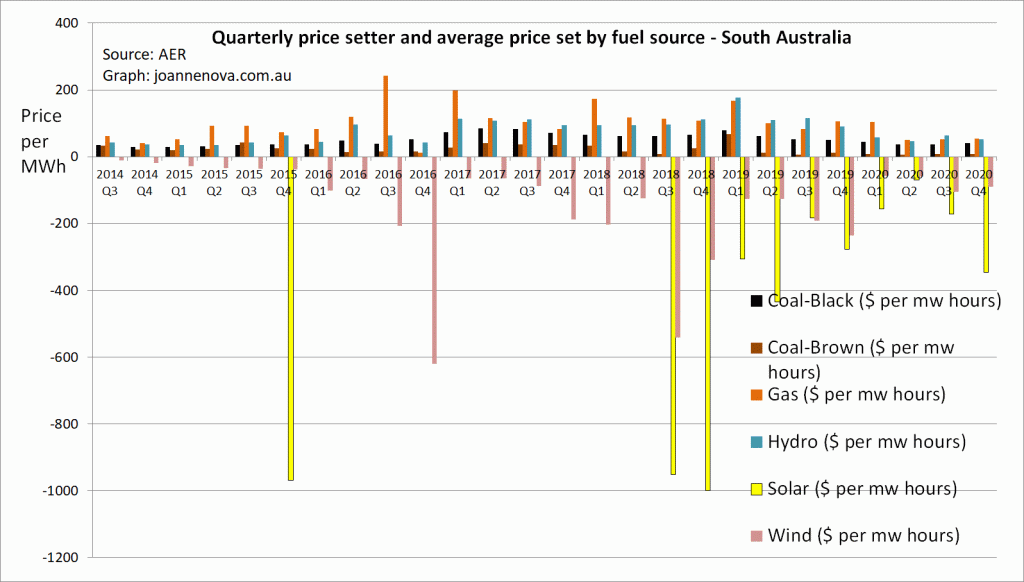 Fig 8: The Negative price bids are all thanks to solar and wind power and are “off the chart”. | Click to wallow in a fake market.
On the NEM, suppliers bid in the hope that someone bidding a lot higher than them wins the last successful ticket in the stack. Then all successful bidders all get paid at that same top winning rate. Obviously, generators don’t want to bid too high, or they earn nothing at all. But the race to the bottom seems kinda odd (to say the least). If they win at minus $1,000/MWhr, then they have to supply the electricity AND pay til it burns for it too. In the end, if the negative bids reduced the wholesale price of electricity by $8/MWh but that’s only due to subsidies, it’s not a savings at all, it’s just a redistribution. Someone else had to pay. It’s false advertising yet again. The AEMO report remarks on the record amount of negative prices in Q4 last year. 1.3.3 Negative wholesale electricity prices Despite the record occurrence of negative spot prices, the impact on the quarterly average prices was limited. Peter Martin — economist of some sort, thinks negative pricing means being paid to “turn off”. His junk commentary is “not even wrong” but for 17 years he was the ABC’s economics correspondent. He is so wrong he was awarded an Member of the Order of Australia (AM). Flinders uni taught him economics. They have a lot to answer for. Peter Martin says: Being even cheaper than the power produced by the old brown-coal-fired power stations, there is at times so much it that it sends prices negative, meaning generators get paid to turn off in order to avoid putting more power into the system than users can take out. It’s one of the reasons coal-fired plants are closing: they are hard to turn off. They are just as hard to turn on, and pretty hard to turn up. He is making mistakes piled on mistakes. Firstly he’s confusing negative prices with something called “Demand management”. Secondly he thinks the new random and volatile grid is progress instead of being an unnatural artificial forced transition that no one needed to have but we were all coerced into paying for. In the new vandalized grid, no one wants to put money into coal maintenance. Plus the companies that own coal own the unreliables. What could possibly go wrong? And who said the ABC doesn’t have advertising? It has the worst kind — the sort dressed up as “reporting” and funded –mostly — through taxpayer dollars. Pace Viv Forbes. Carbon Sense who said this earlier this week.
There are zero comments on this article at The Conversation. And presumably comments will be closed five minutes after I publish this.
Keep reading →
The criminal profilers estimate that the crime was so well developed that small runs of fraud must have been already at work, in test runs in past elections, and they want to hunt for that evidence now… And they warn that unless they are caught, the fraudsters will only grow. The good news is that there is already insurance software that can check and catch dead, moved, and out of state voters on-the-spot as they try to vote. But the legislatures and FBI aren’t going to do that unless The People speak loudly and speak now… If these experts can predict where and when the worst future election fraud is most likely to occur, we just hope that somehow someway there predictions can be used to stop it. The Sovereign Crime of Industrial Scale Vote FraudOur team members were the lead builders of one of the world’s most sophisticated criminal profiling systems in use by law enforcement today. We broke the eBay auction fraud rings and deployed a never-before-used technology to end auction fraud as an emerging crime category. We identified numerous Medicaid fraud rings and were hired by most of the top 10 property and casualty insurance firms to solve auto crash rings that eluded the FBI and every fraud technology.
It’s what the government agencies didn’t do that reveals the sovereign involvement. The national government refusing to investigate the most egregious examples of voter fraud like hundreds of thousands of more ballots than voters in several states, that is a pretty good indicator that they are passive participants in industrial level vote fraud. The refusal of the FBI to fully investigate Jesse Morgan’s truck with the hundreds of thousands of ballots going from New York to Pennsylvania – yet dispatching agents to a NASCAR location to investigate a garage pull-down they hoped was a noose – well, that’s a good indicator, too. Pretty clearly, the evidence is piling up that the FBI had zero interest in trucks with ballots crossing state lines, ballots being shredded in Maricopa County, tens of thousands of ballots received before being mailed and all sorts of other clues any competent law enforcement agency would at least investigate. The experts were not interested in the 2020 election though — it was “too obvious”: There was no interest on our profilers’ part in doing investigation of massive voter fraud. They felt it was so obvious and the current work being done by citizens and published on hard-to-find blogs was state-of-the-art and no further investigations would find much more. Their comments were striking because they said the data easily available showed the election fraud patterns had two very alarming characteristics: It was not the first time this was tried, and it will be performed again, at scale, in the next election. Fraud behaviour evolves — which means it doesn’t just come out of nowhere, and future directions can be predicted.The sociology of fraud has a start, test runs, and techniques and teams that grow. Successful sub-branches take over: Fraud rings, when organized, grow. They continue to expand with new entrants, slightly different profiles, corrupting more people with money that dwarfs what one might make honestly. Fraud techniques are like an organic species: what works, thrives; and what fails, dies out. Patterns emerge. Patterns equal prediction and prediction enables eradication. The profiling team were not interested in the 2020 election where the fraud was so obvious. They’d rather hunt through past elections to find the early runs they are now sure must be there: The team, educated in some of the most sophisticated organized fraud tactics, posited that this was not a dry run. Their thesis is that if one were to seriously evaluate the balloting in many states for 2014, 2016 and 2018, one will find traces of what happened in 2020. That project is under discussion. The US Supreme Court inaction invites more fraudWithout any punishment or consequences there is no way this fraud will not be used in 2022 and so on. Fraud perps are greedy and when left to commit fraud, for which there was likely millions of dollars in remuneration either presently or in the future, they are not going to stop. As fraudsters recognize that national law enforcement refuses to investigate and the courts will not look at evidence, they are emboldened. Who wouldn’t be? Our courts and law enforcement are saying “come, commit all the fraud you want, we won’t investigate, and if there is litigation, we will toss it out on procedural grounds.” If anyone protests, the FBI may raid their home with an assault vehicle. Don’t believe me, well, meet Christopher Worrell. A lot of the standard level fraud could be stopped live if only there was the will to do it It’s almost like election officials are going out of their way to avoid catching cheats: We have technologies that can identify dead voters the moment they cast a ballot. We can identify people who are out-of-state, voted twice, are underage, live in a vacant lot or a UPS or FedEx postal box. We can even show a photo of that vacant lot so you can see where your fake neighbor claims to live. Literally, the second their ballot is counted, they can be flagged as a likely fraud. Yes, we can deploy that technology today. We have done it in the insurance industry for decades. Keep reading →
That’s how much we value our public In a survey of 500 Australians this week, more than half (52%) didn’t want to pay a cent. The situation got worse when they were asked if they would subscribe “like Netflix”? At this point the number of naysayers grew from 52% to 79%. Truth be told, we all deserve a refund, and backdated 30 yearsThe cost to the nation of their ABC is not just a billion dollars a year lost, but their culpable-pro-rata-part in the billions of dollars wasted on policies that were practically pagan witchdraft which the ABC covered up. As leading failures of the fourth estate, the ABC consistently hid the incompetence of universities, professors and institutions like the BoM.
Two out of three people say that it’s biased to the left. Even 60% of Labor voters thought it leaned left. Even, wow, by crikey, 78% of Greens voters felt it “leaned left”. Was that them speaking the unspoken out loud? Are they proud that the national broadcasters uses taxpayer funds to represent just 5% of Australia? This might be a little window to the truth. In future surveys the Greens will learn to say, “the ABC is biased right” and blame Murdoch. All up, most people would pay nothing, and those who might pay were only willing to pay $3 a month — meaning the ABC budget could be cut 75%. The study was funded by the Menzies Research Centre, a right wing think tank. In comments on The Australian about the only response defenders of the ABC have is to accuse the Menzies Research Centre of being aligned with the Liberals. But we all know why the ABC haven’t run surveys exactly like this one. The time to protest The ABC Swamp is coming. Most swipe Left on dear AuntyJames Madden, The Australian The majority of Australians believe that ABC television is not worth paying a single cent for. According to an independent study conducted by True North Strategy, more than half (52.6 per cent) of those interviewed said if they had a choice, they wouldn’t be prepared to pay anything for access to the national broadcaster’s television content in its current form, while the other respondents said they would only be willing to pay (on average) $2.94 per month. Did the ABC publish those “most trusted” survey questions, I’d like to see them if anyone can find them. REFERENCES The ABC Annual Report, Financial statement pages 116 onwards. The ABC Annual Report, “Most Trusted” statistics p18 ABC: Chris Berg and Sinclair Davidson, Against Public Broadcasting: Why and how we should privatise the ABC. h/t Skeptical Sam *Corrected. To be more accurate, there are 13.5 million taxpayers in Australia so the cost is $74/taxpayer. h/t Lawrie There are lessons for conservatives from this eclectic election in the most isolated state on Earth. It was historic, epic, and “A complete and utter landslide“. And the message is “borders”. Remember “Build the Wall?” Conservatives all around the world seem to have forgotten the power and appeal of being able to control who and which viridae, come across the border. If the Democrats in the US fortified the wall, they might not have to fortify election results. 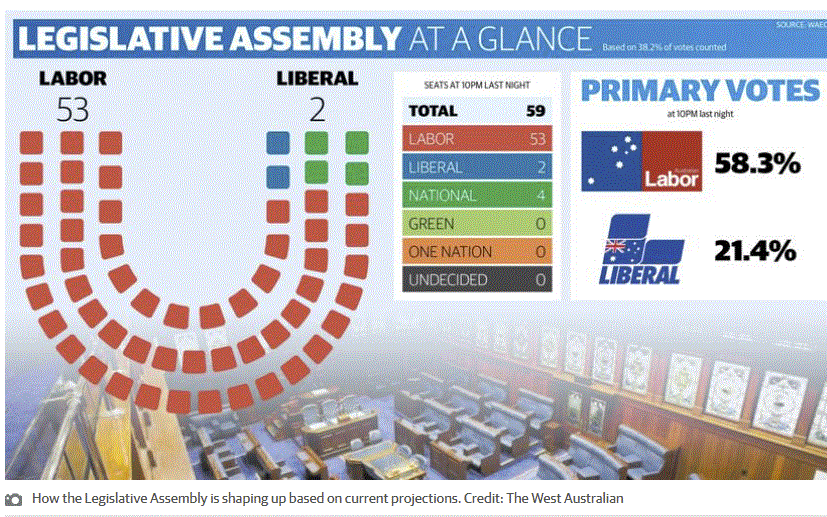 It’s a complete blitz. | The West Australian The election Saturday was a wipeout of legendary proportions among democracies anywhere. Only four years ago, the Liberals (conservatives, theoretically) were the ruling party in Western Australia. Today they hold but two, as in one plus one, seats in the lower house of the WA Parliament, out of 59. They may win 3. The Labor Party took 58% of the first preference votes (that’s almost unheard of). Labor will take the Upper House too. See: WA Election Results. Things are so extreme, the talk now is how the Parliament is not big enough to hold the Labor M.P.’s. The rooms are just not designed for one party having almost all the members. The Labor leader, Mark McGowan, is no Rhodes scholar or Cary Grant. There are no stirring speeches, but he’s wildly popular, by mostly just for standing up for the state. The Labor Party WA is an old fashioned centrist type player. So un-progressively neutrally-woke that when the (ahem, right wing) Liberals recklessly talked about removing all coal power in… f.o.u.r… (4!) years, McGowan said it was too fast, renewables were too unreliable and electricity bills would rise. Did I say centrist? Firstly, secondly and thirdly, it was about bordersMake no mistake, there was only one issue in this election which was a 90 percenter, and that was the two week mandatory quarantine — the hard borders. They worked brilliantly (at least for people on the inside of them). To be fair, Western Australia has a land border which is 1,800 kilometers long — but with a million square kilometers of desert, there are only two bitumen roads across the entire length. If WA couldn’t close the border, who could? So Western Australians have lived the last year like Covid didn’t exist and loved it. (Wishing our friends could too). Closing the borders was hugely successful, wildly popular, and the Liberal (conservative) party opposed it all the way, and they lost the election months ago, and everyone knew it. For months on end, the voters universally sent the message, that they didn’t want Covid, or lockdowns, or any of that. McGowan reached stratospheric popularity — in the order of 90% approval. At one point in polls — as many as 95% of WA voters approved of the border closure. When, in any democracy, on any question do we get such a unanimous decision? Even Apple Pie would struggle. It’s worth noting that this was popular among young voters: despite not being at much risk from the virus, the young wanted the borders closed even more than older voters in WA did — probably because their jobs in the service industries of restaurants and pubs were so at risk from lockdowns. And thus with no virus and no lockdowns, the open economy boomed, the stadiums had crowds of thousands, the nightclubs danced, and the weddings rolled on. We could visit our older folk in aged care homes without a second thought. The only exceptions to the happy list were some tourism operators and the poor sods caught outside the state trying to get back in. A problem that is still a blight. What does it mean to be a citizen if you can’t come home? But even many of the hapless tourism operators ended up happy. Western Australians were prolific long distance travellers before Covid, but after Covid, many of them finally toured the distant corners of their own state for the first time, and the roads were packed with caravans. Local flights were busier than before. The Liberal state opposition in WA, and the federal government Liberals in WA too, consistently took the side of other states, including backing Clive Palmer and his High Court case against WA. Go figure. It was like they wanted to lose. And it will hurt them federally too. Which WA Liberal Senator or member spoke for WA? As far as I can tell, they all represented the Liberal Party, not the people. They got what they deserved. … the single biggest factor in the history-making victory was McGowan’s steadfast defence of WA’s right to close its border to keep coronavirus out of the State. He resisted pressure from Prime Minister Scott Morrison, defeated Clive Palmer in the Federal and High courts, waged a war of words with his NSW counterpart and watched the WA Liberals implode spectacularly when they misread public sentiment. — Peter Law, The West Australian Once upon a time, conservative parties were the ones which spoke of sovereign borders, but when it came to the cheapest and most obvious way to stop a potential Sino bioweapon, to prevent debilitating lockdowns and loss of individual liberties, mortality, hospital surges, long term unknowable health problems — most conservative parties missed best chance they’ve ever had to argue for strong borders. And they are still missing it. Western Australia is an extreme example, but this was an extreme result. Border control is a tougher pill when the economy is built on tourism instead of iron ore sales to China (which need to diversify). It’s awful when families are split. It’s tough when there are border towns — but there must be a better way to manage them than a state wall through the middle — why not draft a federal agreement that the twin towns are automatically temporarily moved to the care of the state without an outbreak?). But the next virus is coming. Giving up the trips to Bali was a small price to pay to avoid doing lockdowns and to avoid potential long debilitation. Speaking of which: What’s a lockdown with no border control? At best, inefficient. At worst, sabotage. Clearly the West needs a better Pandemic PlanIt’s a personality thing as well as a medical thing. Right wing entrepreneurs might be happy taking risks, but the democratic masses are clearly not, no matter how hard the risk takers try to convince them. And until widespread anti-viral cocktails make this treatable (which means getting past the gatekeepers), or SARS-2 evolves into something more like the flu, the cheapest easiest way to make both the risk takers and the masses happy (ie. democracy) is to keep unknown epidemics in their country of origin. i.e. All Chinese bioweapons should stay in China. Though, of course, no matter which lab or cave generates the next one, the problem code could pop up anywhere, not necessarily just at a wet market next to a lab. The best time to close borders was January last year when the WHO was telling us to keep them open. Second political black hole — the Green-left climate trapFacing disaster, the WA State Liberals installed a new inexperienced leader in the last few months. He promptly announced a far left climate anti-coal policy and thus drove off any support from the base that still remained. His energy policies were so bad, they didn’t just make it hard for Liberal supporters to vote Liberal, they made it imperative to vote against them. In a complete flip of normal politics — the Liberals sounded like the Greens, and the Labor Party were speaking like climate skeptics. The stupid Green Left Climate election trap is so obvious, it’s amazing any Western politicians still fall for it. The trap is when any centre right politician thinks they can appeal to young lefties in the hope of picking up Green votes. The climate religion has nothing to do with science or reason, or the centre of politics. It’s only a fashion quest for status — so young woke voters cheer the craven centre right for two microseconds (if that), but they don’t change their votes. Appealing to the group that say they care about carbon dioxide emissions is doomed from the get-go. Reducing actual emissions is worthless to them — as has been shown again and again. In every choice between cutting CO2 and advertising their own virtue, they choose the advertising every time. They don’t support nuclear power, they don’t say “no” to flights for frivolous holidays, or advocate online conferences instead of carbon hungry global symposiums, and they keep supporting wind and solar power even though neither of those is a cost effective way to reduce CO2. The Liberals in WA didn’t do their research, didn’t understand the science of virology or climate, nor did they understand the voters they represent. The futurePerhaps it won’t be as awful as it could be. Given that some states are run by The disguised Uniparty anyhow, being run by The Labor Party is at least a known risk, and there is the hope that the Opposition will rise like a phoenix reborn, without so much baggage. There’s also the possibility that with so much power, the Labor Union powerbrokers will lose their control. Maybe no faction will rule the roost, and a bunch of Labor members sitting on seats that are really not Labor seats, will respond to pressure from electorates that could flip back any minute. (To those West Australians, start writing letters now). And maybe a few political leaders will notice that simple policies are winners. Listen to the voters, aim for the centre, toss out all the climate vanity, and control your own borders. Keep reading → After a thousand headlines told us Climate Change would make deserts grow, a new study suggests it won’t. It’s a finding that shocks no one who knew that climate models have no predictive skill with rainfall, and that a warmer world means higher global precipitation. Plus there’s the awkward clue that for the last forty years the arid regions of the world have been getting greener instead of more deserty. Looks a bit different?The top map (below) shows the deserts expanding — but that’s the old predictions which are based only on “atmospheric data” like temperature and rainfall. The bottom map is the new work which uses soil and vegetation data too. Red means growing deserts. Blue means shrinking. Remember, all contradictory conclusions are based on expert opinions using worlds best practice and done by Nobel-Prize-winning people. Shame about all the farmers and investors making decisions based on junk models.
The new study is based on modeling too so it is still wrong, but less useless than previous studies. The hugely different forecasts show how vaporously thin the past doom and gloom was, and how so many headlines were generated out of a banal omission from an inadequate model. Cancel the cover shots of cracked Earth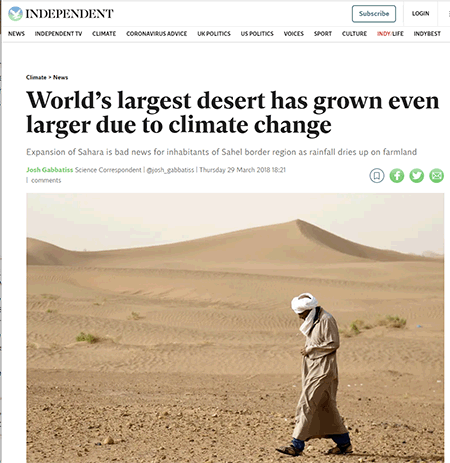 Or not. | The Independent & nearly every other media outlet on Earth. Now they tell us? Now we find that all the past expert predictions were made with models that only used “atmospheric information” like rain and temperature — to predict the condition of plants and soil. You’d think they might have mentioned that. Now that they have some actual soil moisture data and flora involved — things look very different. As all good skeptics know (but apparently not science journalists) increasing CO2 means plants need less water. Thus more carbon dioxide makes plants “drought resistant”. Note the attention getting headline: Climate change may not expand drylandsPrevious studies used atmospheric information, including rainfall and temperature, to make projections about future land conditions. The real picture is more complicated than that, said Kaighin McColl, Assistant Professor of Earth and Planetary Sciences and of Environmental Science and Engineering at SEAS and senior author of the paper. “Historically, we have relatively good records of rainfall and temperature but really poor records of the land surface, things like soil moisture and vegetation,” said McColl. “As a result, previous definitions of drylands are based only on how the atmosphere is behaving, as an approximation of the land surface. But models can now simulate both atmospheric and land conditions. By just looking directly at the land surface in climate models, we find that the models aren’t showing a clear increase of drylands over time and that there is huge uncertainty about the global average state of drylands in the future.” Plants need less water when there is more CO2: Keep reading → The EU has given up trying to persuade Australian voters that wind and solar power is “cheap”. Instead, it’s using Upperclass centralized bully-power in an attempt to force Australia to sacrifice cheaper electricity and hobble its generation network to satisfy the EU totalitarians. Australian exporters could face millions of dollars in European tariffs as EU seeks to punish pollutersWritten by someone at Their ABC Australian exporters to Europe are likely to face millions of dollars in new tariffs after the European Parliament voted overnight to move forward with a carbon levy on products from countries lacking serious pollution reduction programs. The vote came after a top parliamentary committee noted concerns about “the lack of cooperation by some of the EU’s trade partners … to reach the objectives of the Paris Agreement”. Australians installed more renewables per capita than any place on Earth in 2018-19, but that isn’t enough. The EU say we need a “target” of net-zero, (which we can point at and ignore, like most of what the EU does): Kathleen van Brempt, a key parliamentary trade coordinator, said an FTA was contingent on “a clear vision [from] Australia by when and how they will become climate neutral and by when and how they will phase out of coal”. Until Australia establishes a new scheme to lower emissions, its exporters to Europe face the prospect of paying additional tariffs under the new Carbon Border Adjustment Mechanism (CBAM), which is expected to come into force in 2023. The mechanism is designed to apply tariffs on imports equivalent to the fees paid under the EU’s Emissions Trading System by local businesses producing the same product. Three solutions: Nukes, fake targets, or a trade war?Being practical, given that the EU is our second largest trading partner, we can either build a few nuclear power plants, fake up a symbolic “carbon target”, or fight back in a trade war. While Australia has more uranium than any place on Earth, we also have 300 years of coal and it’s a lot cheaper. Nothing beats wholesale brown coal at 3c KWh. As for symbolic carbon targets and fake declarations of emergencies, the price is still too high. These careless declarations become potent legal tools to protect extreme protesters, excuse trade wars (like this one), and punish certain politicians and companies. The best choice is to point out how Australia is already a super-achiever with carbon reduction per capita, and the installation of unreliable renewables. When the EU achieves similar per capita “gains” then they can lecture us — especially when we have an energy-dependent economy, live on the lowest population density country on Earth, have bigger distances to cover, and are more remote than any continent bar Antarctica. Until then Australians will just have to drink Australian wine and cheese and drive South Korean and Japanese cars. We’ll sell our gold, shiraz and beef to the UK, Canada, India, and US. Long live The Commonwealth! Time to talk about that lop-sided AU-EU trade imbalanceIn a trade war with the EU, Australia surely holds the upper hand. We export $30 billion dollars worth of goods and services to the EU, but import $80 billion dollars worth of EU goods, none of which we really have to have, and that’s despite the EU already having higher tariffs on Australian goods than we do on EU goods. Could we not just add tariffs to incoming EU goods to recover their charges and distribute them back to subsidize our exporters to the EU? Seems only fair. Yes, yes, obviously we’d prefer no tariffs, but if the EU wants a tariff on our electricity, so be it. If the EU wants to set our electricity prices, Australians could easily choose not to buy EU goods. It’s not that we have anything against the suffering small businesses of the EU (to whom we are rather sympathetic), but if they won’t protest at this bullying behaviour and their own stupidly high electricity prices then we can’t help them. We don’t need German windmills, French wine, Italian cheese or Spanish olives. We can supply our own. We should also cancel our French submarine purchase “in protest” (any excuse will do — the Japanese subs are better in any case).
Self censorship of a whole nation is so much more efficient. Otherwise the rulers need a lot of police. And if people are only punished randomly, there are no rules to work around — and the fear and guessing sets the boundaries way further out. Communist Tactics to Force Self-Censorship Sweeping Americaby Petr Svab, The Epoch Times The principle of self-censorship is that people, just to be on the safe side, refrain from saying even things that aren’t outright banned by some applicable rules. Vague RulesThe Chinese Communist Party (CCP), the world’s most notorious censor of free speech, has for decades used the method of making its policies intentionally vague. During its past political campaigns, for instance, the central leadership would issue a decree that “rightists” and “counterrevolutionaries” were to be punished. The next lower rung of party officials wouldn’t be told what exactly makes one a “rightist” or a “counterrevolutionary” and perhaps not even what the punishment should be. No official, however, would want to be seen as too lenient—that would carry the risk of being labelled oneself. As such, each successive level of bureaucracy would intensify its interpretation of the policy, leading to ever more extreme results. In some periods, the hysteria went far beyond self-censorship as even refraining from political speech wasn’t enough. The method appears to now be in play in contemporary America. Amazon recently updated its policies to ban books that contain “hate speech” without explaining what it considers as such. Since Amazon controls over 80 percent of the book retail market, publishers are left to guess whether a book may get the “hate speech” label and thus be much less profitable to publish. Perception of Random Targeting
Elements of this method can be seen in various settings in the West. When Amazon recently banned a book that criticizes transgender ideology published by Encounter Books in 2018, it didn’t explain why. Instead, Amazon quietly updated its book policies on hate speech. It then left it to the public to connect the dots and label the book as hate speech themselves. Guilt by DenialKeep reading → Fame, Fortune and Victimhood status is possible for anyone*Babylon Bee reports unrecognised benefits of Meghan and Harry interview, inspiring millions of young girls: “Oppression is inescapable,” said Markle, who is married to a prince and worth approximately $50 million. “If you are a woman– especially a woman of color, oppression will follow you all the days of your life and you will never really be happy.” You can have it all: “Thanks to Meghan Markle, I feel like I too can grow up to be a famous, rich, beautiful oppressed person,” said Mikayla White, a 5th-grade girl from Southern California. “It’s so encouraging to be reminded that I can grow up to be in the top 1% while never losing my resentment and high sensitivity to microaggressions.” Markle has promised to continue taking her message of hope to girls everywhere until no one is happy or thankful anymore. Out with all that old restraint, diplomacy, and gratitude for fame and fortune. The Australian ABC described the interview as the worst imaginable for the Royal Family. Though some of us can still imagine what it would be like if, say, the first in line to the throne had been actually caught having an affair. Hyperbole knows no bounds. *Except for old white Catholic Cardinals and climate skeptics.
Moves continue in the US to remove “extremists” from the Military. Though no one seems to know the definition of extremeist, nor what will happen to anyone identified as one. Every illegal regime that comes to power by means of a coup lives in constant fear of the same thing happening to them. It’s their abiding characteristic and the reason they regularly have mass purges. — The Pointman, How the Purge of the Military is Being Done In 1899 the hard left gained power in France, and purged “the two main” conservative institutions — the church and the military. James S. Corum describes what happened and how 15 years later, it was a bloodbath in the first month of the war against the Germans, the French lost a quarter of a million men — fully one fifth of their field army. When a Great Democracy Politicized the MilitaryJames S. Corum, American Thinker Even without Facebook the French government still had ways to filter out their political opponents. In their desire to remold France according to Jacobin principles, the Left Bloc decided that conservative officers had to go. The government announced in 1901 that promotions in the army would no longer be an internal matter of the military promotion boards but would be under the purview of the War Department, run by the political ministers. Under General André, the War Ministry initiated a secret system of surveillance and informants to collect information on the political, social, and religious background of officers. A network of Freemasons, leftist government officials, and leftist officers send information on French officers directly to the War Ministry. A vast system of secret files was amassed, eventually amounting to files on 19,000 of the 25,000 regular officers. The War Ministry used the files to push the careers of officers known to favor the left, while adherence to Catholic practices or familial and social contacts with the old aristocracy, were enough to dead-end even the most competent officer’s career. The effect on the troops was so predictable: Morale plummeted when it was obvious the promotion system was rigged…. The politicization of the army in the decade prior to World War I had an enormous effect. Many good officers left the French army as politically correct mediocrities were promoted. The officer education standards fell dramatically as applications to the elite military academies of France, which mostly consisted mainly of officer cadets from conservative and religious families, fell dramatically. In 1897 there had been 1,920 applications to École Spéciale Militaire de Saint-Cyr, France’s West Point. By 1907, however, the number of applicants was halved. In 1900, 42% of the artillery officers were graduates of the elite École Polytechnique. In 1913, only 13% of artillery officers were graduates. The average scores on the academy entrance exams also fell in proportion to the decline in applications. And not only the officer corps was demoralized, but the professional NCO Corps also abandoned the military. In 1900 72,000 NCOs had re-enlisted. In 1911 only 41,000. And the cost was a quarter of a million men, and almost the entire nation of France. More than a decade of politicization of the military resulted in a French army that went to war in August 1914 with appallingly poor leadership and training. The great social experiment of the Left Bloc was a bloodbath. In the first month of the war, the French army lost 250,000 casualties—20% of the field army. Faced with an existential crisis, the French government announced a truce between the left and the conservatives. For the duration of the war, with France’s survival at stake, meritocracy would be the only standard in the French army. Meritocracy was always going to win in the end. But it might have been German meritocracy that won. h/t David E. Another Ian. Kenneth Richard at NoTricksZone, found some studies showing Fires are less common today than in the past — including a ripper of an Australian study. Emma Rehn et al went to a small lake in far North Australia and dug up about 6m of sediment core from the bottom. They looked at charcoal deposits and a bunch of different minerals. They discovered that the top most recent layers had the worst fires for a thousand years. It had all the makings of a Great Climate Change advert. But to their absolute credit, they kept going down and further back and uncovered a story of four thousand long years of wild blazes. Despite millennia of prehistoric infernos, no media outlets in Australia have shown any interest in this study which came out a month ago — showing Sensationalism is not all its cracked up to be, and not as much fun as Confirmation Bias. Look at the current blip (left hand side) since European settlement, compared to the fires of 4,000 years ago (right hand side). As Mr Dundee would say, “That’s not a fire…. ” The authors took mineral samples, looked at the different sizes of the charcoal particles. They decided that there were cycles of intense fires every 450 years in the era around 3 – 5,000 years ago largely driven by the climate. (Which climate models explain those cycles?) There was also more rain around 4,000 years ago, which — rather than reducing fires — may have fueled the biomass growth that led to intense wildfires. In the last 2,500 years ago, things got drier and more variable, and people who liked to eat a lot of mudflat shellfish moved into the area. Apparently they did more local fire management too. They appear to have been lighting more smaller fires. That, and the drier conditions meant there wasn’t the bulk biomass lying around to fuel the infernos we’ve come to expect from the modern Department of Planning, Industry and Environment. The z-scores graph brings out the highest intensity fire periods. The present is on the left (again). Arnhem Land Fires were far worse 3,000 to 5,000 years ago and once had cycles of high intensity every 450 years. Then a strange thing happened around 900 years ago when there was hardly any charcoal in the mud sediments. The people at the time ate less shellfish and appeared to wander around more. The fires seem to be small regular patchwork fires. Then in the last 200 years, European people arrived, mucked up the neat patterns and big fires came back again for the first time in a thousand years. Though the top layers of mud were stirred up in the little lake, so actual dates are blurry. But historical records describe what happened. We knew the fires were big, we just didn’t realize how unusual they were. Of course even bigger and stupider fires occurred in the last twenty years far away on the East coast of Australia. Experts decided they would protect koalas and spotted quolls by stopping all the small fires and grazing cows. Thus letting an incendiary tonnage of fuel build up so they could generate proper pyroclastic infernos that sterilize the Earth. The new genius plan is to use solar panels and windmills to ward off Dem’ Big Climate Apocalypsy. Stone Age science is so much more advanced than Politically Correct Science. Keep reading → When is an Armed Insurrection an Unarmed Protest?Your mission, should you choose to accept it: Red-pill the West. No guns were found on any of the protesters who went into the US Capitol on January 6th. The most important part of this message is not about guns, or the lack of. It’s about The Media. People need to know they are being sold elite propaganda every night on TV — fake news that serves the Upper Class Swamp. What are the odds that a group without a single gun would be able to overturn the US Government? And on one of the most important sitting days in the history of Capital Hill, with possibly the largest rally in history happening at the same time, all known weeks in advance. Clearly Capitol Hill would be well protected. Clearly we would expect they had tighter security than normal. Oh wait…? What does this say about the people in charge of Capitol Hill security — which was Nancy Pelosi. What does it say about the intent of the protesters. Were they there to overthrow the government, or were they just citizens who want free and fair elections? If they’d had bows and arrows they would have been a bigger threat. FBI Counterterrorism Official: No Firearms Recovered During Jan. 6 Capitol BreachJack Phillips, Epoch Times An FBI official on Wednesday testified at a Senate hearing that she has no knowledge of any guns being recovered from suspects who were arrested during the Jan. 6 Capitol breach. When asked by Sen. Ron Johnson (R-Wis.) about whether firearms were recovered or if any suspect was charged with firearms offenses, FBI counterterrorism official Jill Sanborn responded: “To my knowledge, none.” But in the hearing, Sanborn also said that before the Jan. 6 incident, “We knew they would be armed, we had intelligence that they would be coming to DC, but we did not have intelligence that they would be breaching the Capitol.” “I believe that the only shots that were fired were the ones that resulted in the death of the lady,” Sanborn also testified, referring to the officer-involved shooting of Ashli Babbit. So the FBI “knew” they would be armed, but no one thought to add extra security or to tell Capitol Police not to let them walk into the building? Five people died and all of them were Trump supporters. The policeman, Officer Sicknick was fine on the night of the protest, but died, possibly of a stroke (his family think) the next day. Other stories about the Capitol Hill storming and corruption in US politics: Keep reading → |
||||
|
Copyright © 2024 JoNova - All Rights Reserved |
||||

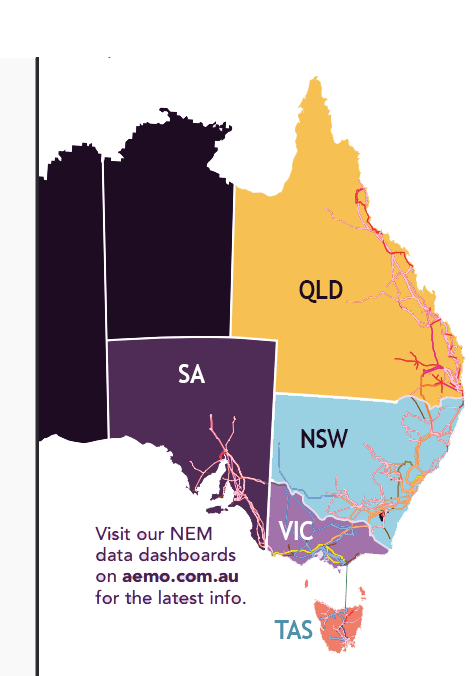
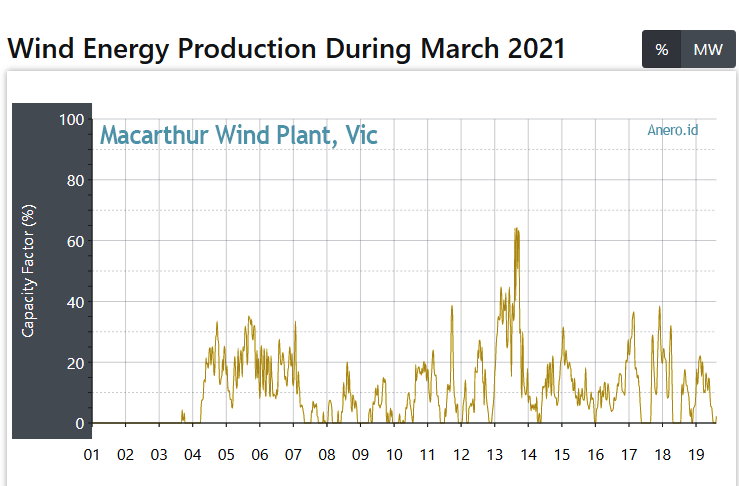
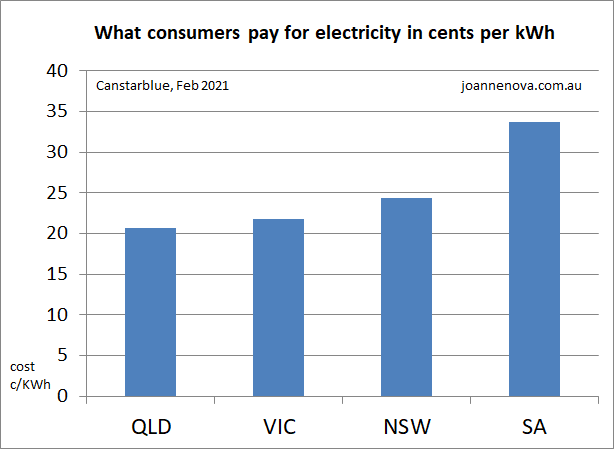
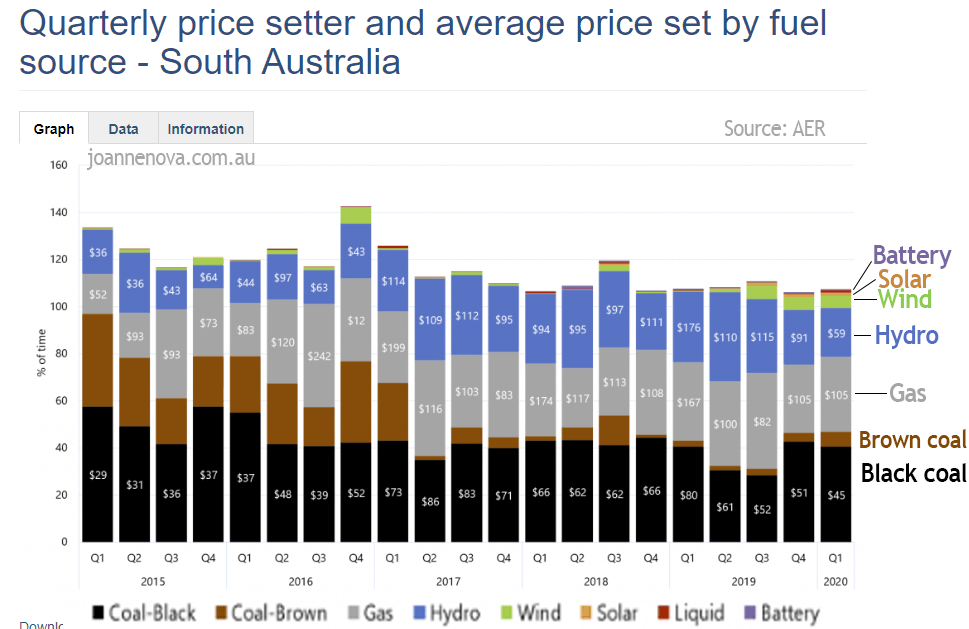
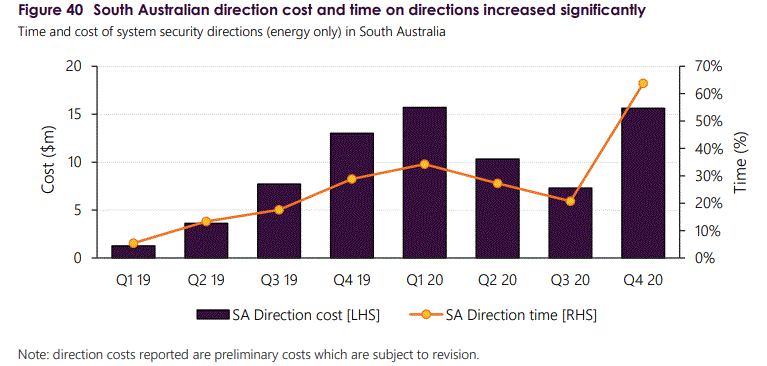

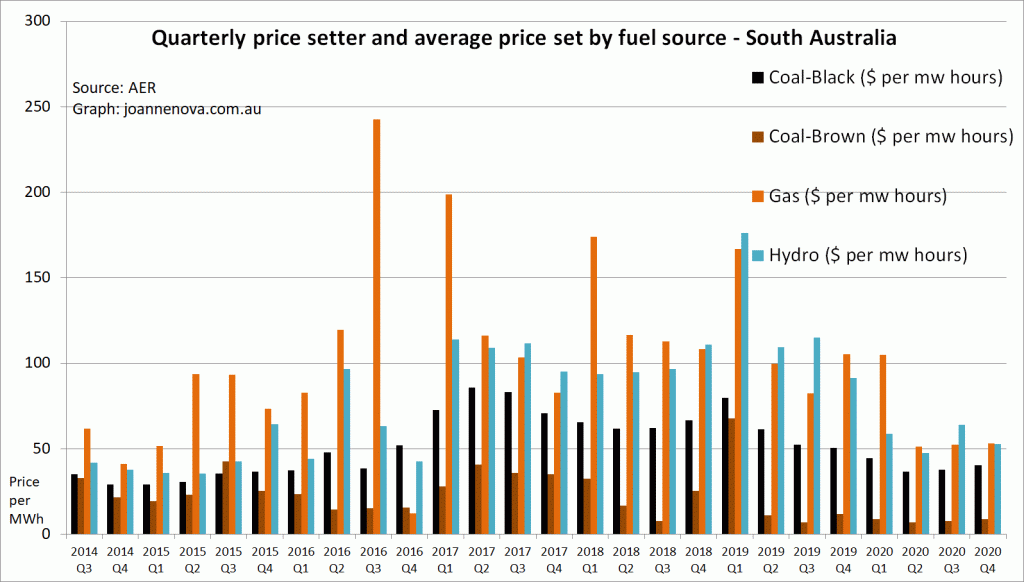


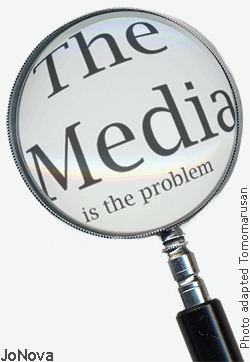

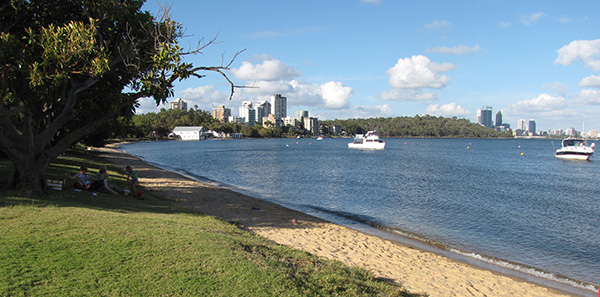
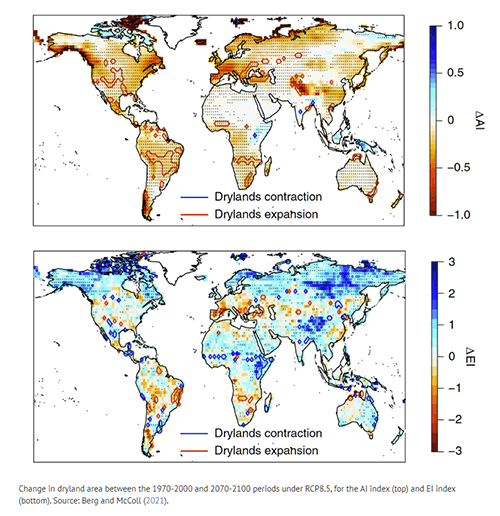
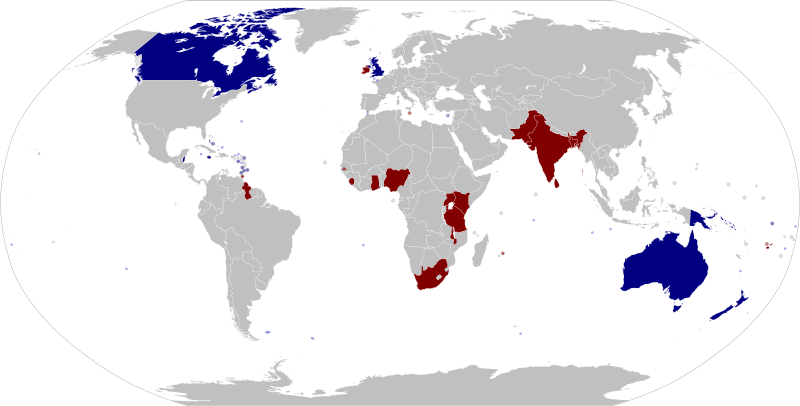
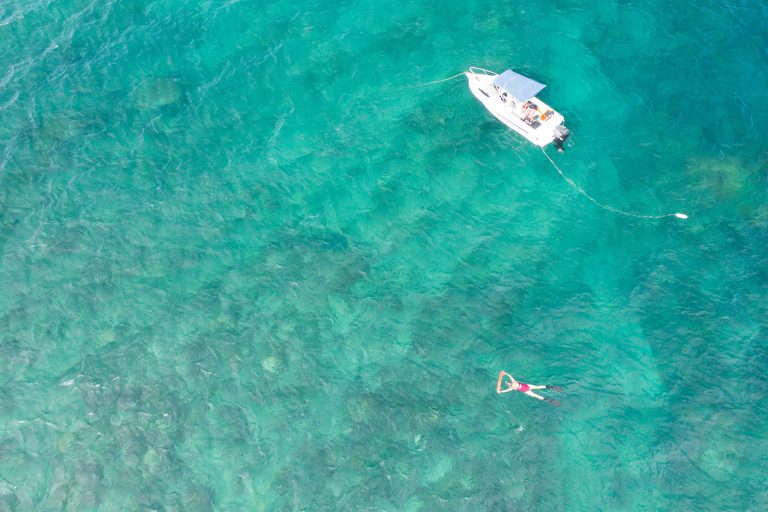




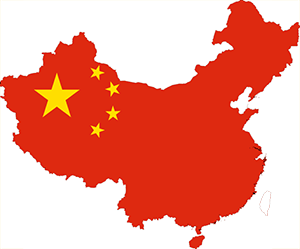
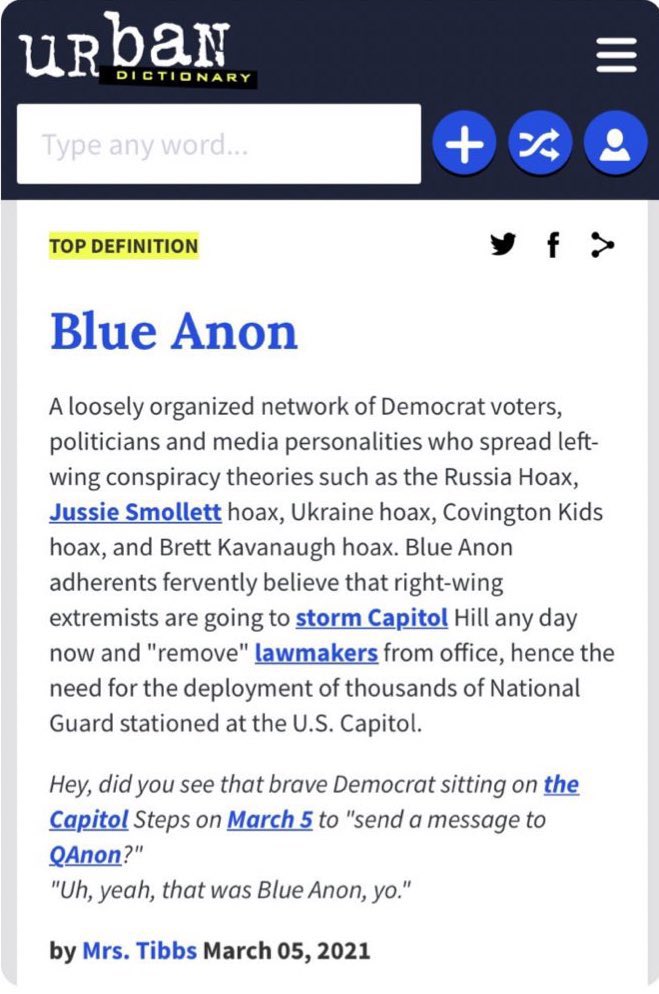
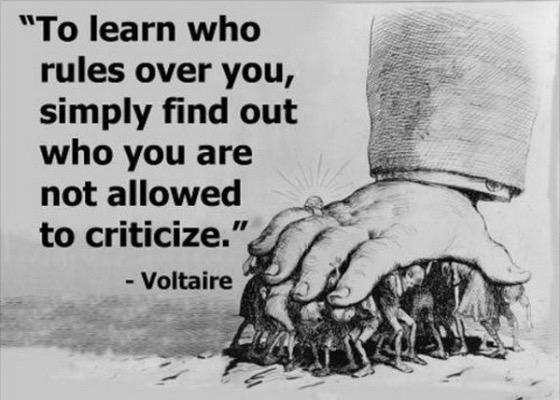

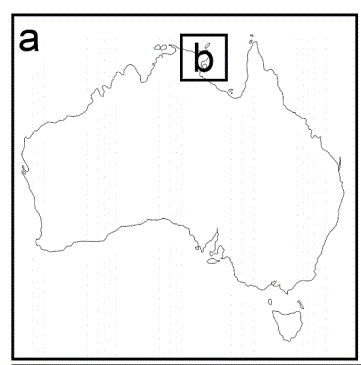
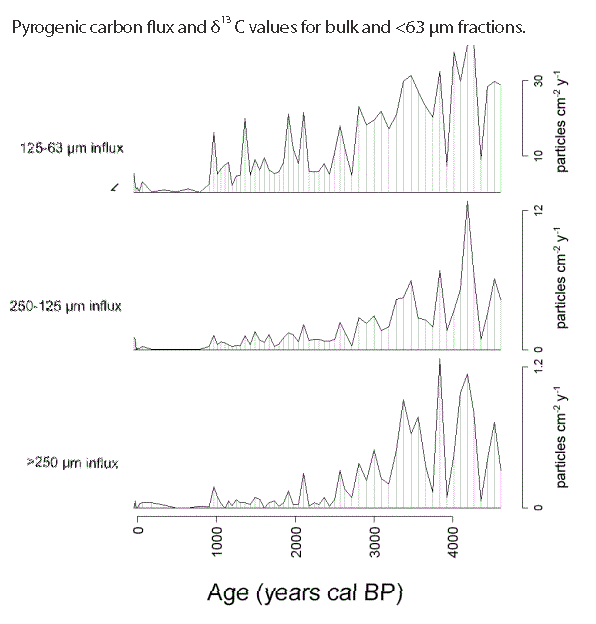

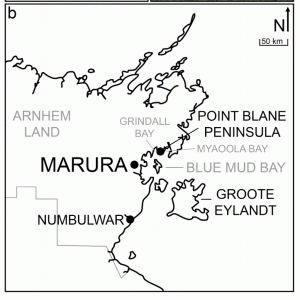
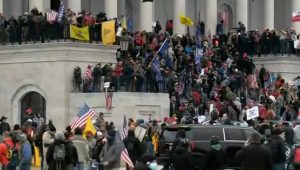











Recent Comments